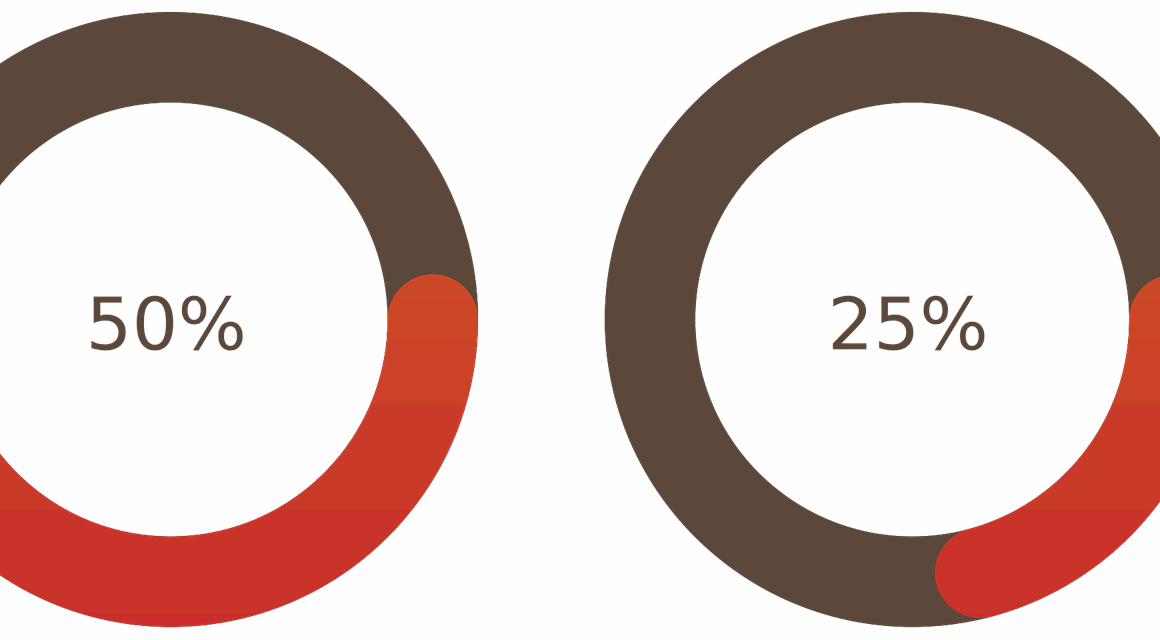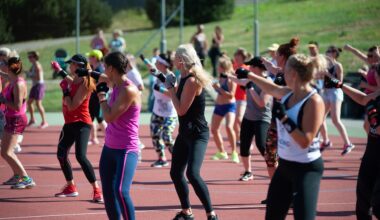The Intersection of Technology and Motivation in Fitness Progress
Fitness apps have revolutionized how individuals approach their health and well-being. The integration of technology into fitness goals has led to enhanced motivation and a more structured planning approach. Motivation is a critical component in achieving fitness success, and apps make this crucial. Through personalized features, users can set and track their specific goals. This increased engagement maintains accountability over time, making a drastic difference in outcomes. Various apps cater to diverse fitness levels and preferences, whether running, weightlifting, or other activities. One significant benefit of these applications is their ability to provide real-time feedback. Users receive encouragement and recognition for their efforts, fostering a sense of achievement. The social elements integrated into many fitness apps also facilitate motivation; users can connect with family and friends for encouragement. Tracking progress through visuals, such as charts and graphs, helps individuals understand their physical improvements. The interactive nature of these applications immerses users in their fitness journey, ensuring they remain committed to their health objectives. As technology continues to evolve, its potential to inspire and motivate will only increase, making fitness more accessible and engaging.
The Role of Habit-Tracking Features
Habit-tracking features in fitness apps are vital for personal development and motivation. These tools allow users to establish consistent patterns of behavior essential for long-term success. Apps often include daily, weekly, and monthly tracking, enabling users to visualize their progress over time. This visualization serves as a motivational tool itself; seeing consistent activity boosts confidence and commitment. Furthermore, many apps employ reminders and alerts to encourage users to stick to their routines. These nudges serve as gentle prompts, reminding users of their fitness commitments. Habit-tracking also allows for the identification of patterns and potential roadblocks. By understanding when motivation wanes, users can adjust their strategies effectively. Community features enhance accountability; sharing progress and achievements with others can spark friendly competition. Gamification elements, such as rewards and badges, add an extra layer of motivation. Users find it exhilarating to earn these awards for meeting milestones or maintaining streaks. Additionally, some apps offer integrations with wearables, providing automatic tracking of various metrics, like heart rate. This integration streamlines the process, reducing friction and encouraging consistent engagement with the app.
The accessibility of technology has made fitness tracking apps increasingly popular among all age groups. Older adults, in particular, have recognized their benefits in maintaining a healthy lifestyle. Tailored features designed specifically for this demographic support safe exercise routines and offer gentle encouragement. With easy navigation, senior citizens can use the apps effectively, regardless of their tech-savviness. Specialized fitness programs focus on gentle exercises, accommodating various mobility levels. Development teams are keen on using technology to empower older adults. User-focused designs emphasize clarity and simplicity, ensuring that seniors feel comfortable engaging. Monitoring tools play a key role; tracking steps or heart rate can significantly aid older individuals in managing health conditions. By incorporating user-friendly visuals and sound features, apps provide essential data while being easy to understand. Additionally, some applications facilitate connections with healthcare providers, ensuring expert guidance. This connectivity ensures that fitness goals align with medical advice. As users experience improvements in their health, motivation grows naturally from this enhanced well-being. Such technological integration allows older adults to foster independence while effectively managing their health.
The Power of Community and Social Connectivity
Community support is a cornerstone of fitness motivation in today’s digital age. Many fitness apps have recognized this need and integrated community features to foster social interaction among users. These features create an environment of encouragement and accountability, benefiting user motivation significantly. Participating in challenges and sharing personal successes engages users with like-minded individuals. Friendly competition can push users to achieve their best performance. For example, leaderboard functionalities allow users to see how they rank against friends. This sparks a sense of camaraderie, making fitness journeys feel less isolated. Users also benefit from sharing tips, advice, and support, contributing to a comprehensive fitness experience. The emotional benefits of being part of a community are profound. Users may experience increased motivation through peer encouragement as they navigate obstacles. Social features can also help individuals connect with mentors and professional trainers. Connecting with experienced individuals provides valuable insights and personalized guidance. By embracing these community aspects, fitness apps foster environments that maintain motivation, leading to better adherence to fitness goals. Ultimately, the journey becomes less about individual success and more about collective achievement.
In addition to community features, personal trainers and fitness experts are increasingly available through these apps. Many platforms now offer access to professional guidance, providing tailored workout programs based on individual needs. This personalized approach redefines how users engage with fitness, ensuring they receive the resources required for their specific situations. Expert input can dramatically influence motivation and participation as users feel supported by professional advice. Live streaming classes and coaching sessions create an interactive experience that further enhances user motivation. Users can participate in real-time workouts, fostering a sense of community and accountability. Additionally, having personalized trainer feedback can keep users committed to their objectives. Moreover, integrating meal planning and nutrition tracking into apps creates a holistic approach to fitness. Users benefit from balanced nutrition tailored to their fitness goals, making it easier to sustain healthy habits. This comprehensive method empowers users to maintain overall wellness rather than focusing solely on exercise. By recognizing the importance of both fitness and nutrition, these apps effectively support users in achieving their health objectives. The combination of expert advice and personalized features amplifies the motivation users experience during their fitness journeys.
Data-Driven Insights and Progress Tracking
Many fitness apps leverage data analytics as a central feature to enhance user accountability. By acquiring data on user performance and habits, apps provide valuable insights into individual progress. Understanding trends, such as improvements in speed or endurance, helps users recognize the tangible results of their efforts. This concrete feedback loop is critical for maintaining motivation over time, as users can visually see their enhancements. Additionally, goal-setting features often tie closely to these analytics, allowing users to adjust and redefine their targets based on historical data. Such strategic adjustments ensure that users remain challenged without becoming overwhelmed. This balance is crucial for fostering long-term engagement with fitness apps. Many applications also incorporate advanced technologies, such as AI, to personalize user experiences further. Analyzing user data enables apps to offer tailored workout recommendations, ensuring each user receives a custom strategy. Machine learning algorithms refine suggestions over time, enhancing adaptability to changing goals and preferences. Users appreciate the ability to meet their needs as they advance in their fitness journeys. Thus, data-driven insights play a vital role in sustaining motivation and personal growth in fitness.
The future of motivation and habit-tracking apps looks promising with ongoing advancements in technology. Emerging trends showcase a shift toward increasingly personalized experiences that cater to individual user needs. Many developers focus on integrating artificial intelligence and machine learning to enhance user interactions. Such advancements will lead to even more tailored workout suggestions and improved user engagements. Moreover, integrating virtual reality into fitness apps presents new possibilities for immersive exercise experiences. Users can engage in challenges and workouts in virtual environments that motivate and inspire. As users navigate their fitness journeys, maintaining interest is vital for consistent engagement. Wearable technology will continue to play a significant role in fitness applications, as they allow seamless data collection. These innovations promise to provide users with real-time feedback and personalized assessments. Furthermore, collaborations between fitness apps and healthcare providers will ensure users maintain overall wellness. These partnerships will enhance the quality of guidance users receive, creating more significant impacts on health. Ultimately, as technology continues to evolve, so will the ways fitness apps foster motivation and facilitate habit tracking, helping users achieve their health goals more effectively.


